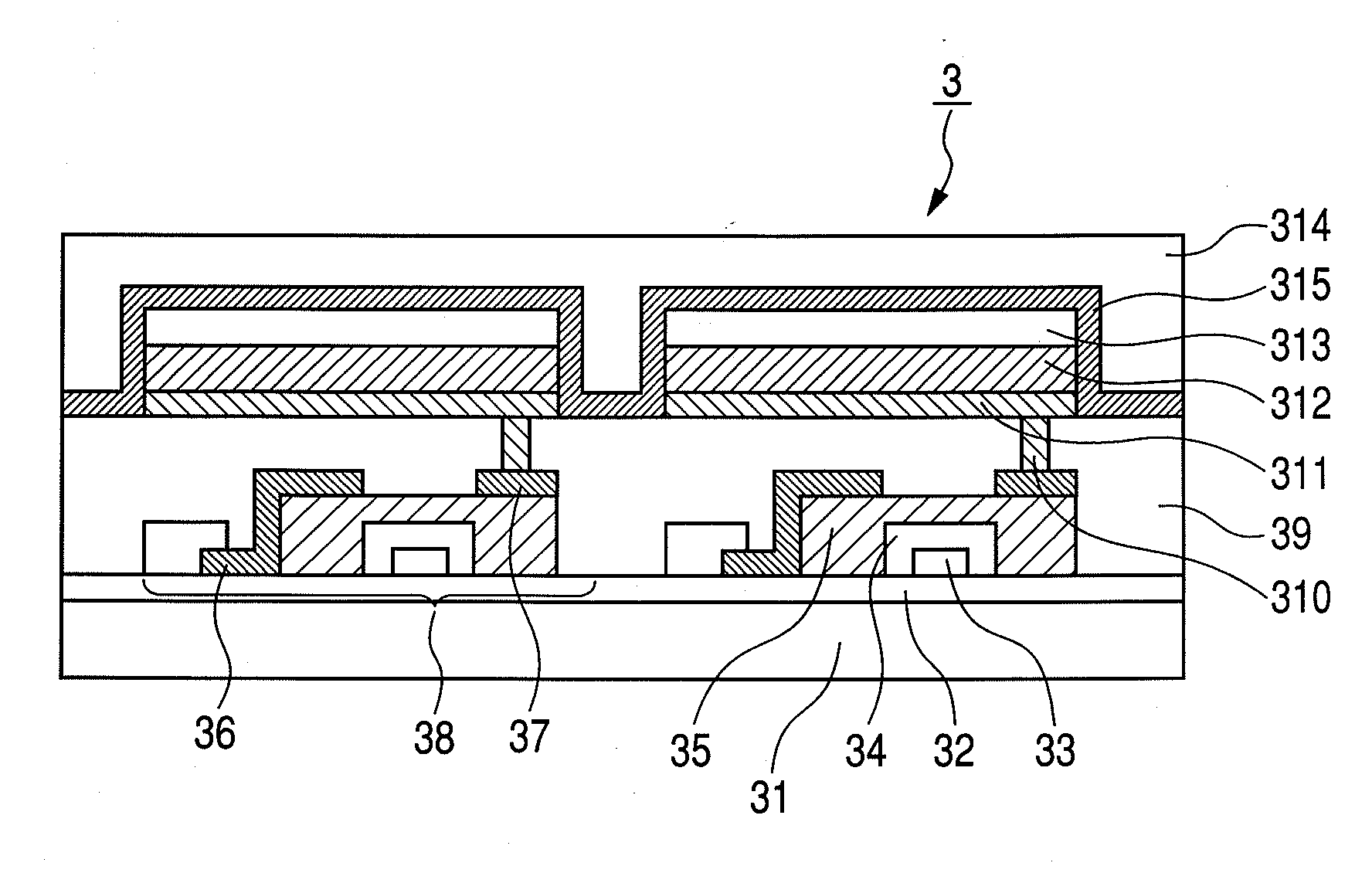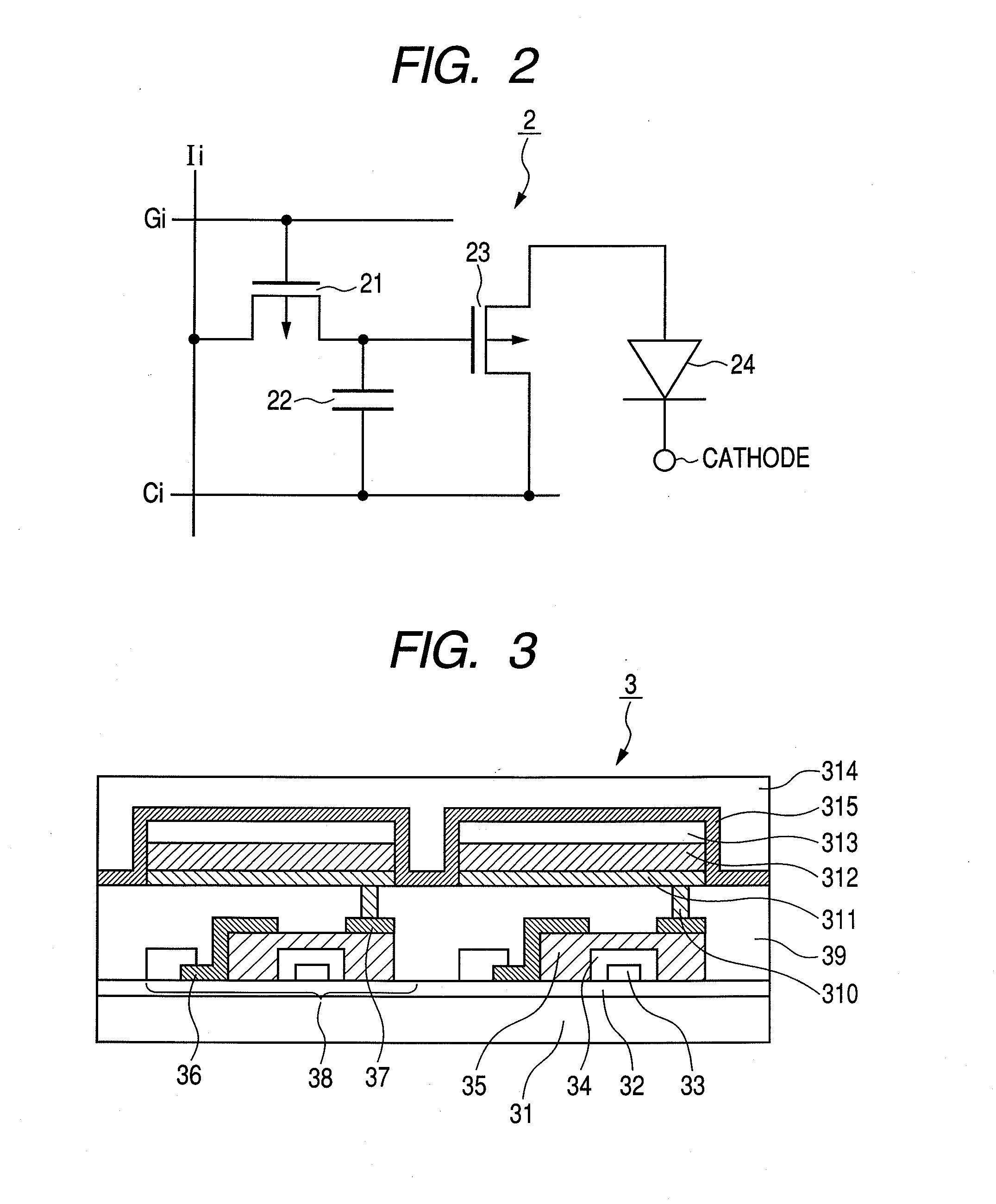Organic metal complex, and organic light emitting device and display apparatus using the same
a technology of organic light emitting devices and complexes, which is applied in the direction of static indicating devices, instruments, halogenated hydrocarbon preparations, etc., can solve the problems of durability and many problems that remain to be solved, and achieve the effect of high luminance and high efficiency
- Summary
- Abstract
- Description
- Claims
- Application Information
AI Technical Summary
Benefits of technology
Problems solved by technology
Method used
Image
Examples
example 1
Synthesis of Exemplified Compound B-20
[0170]
[0171](1) The following regents and solvent were loaded in a 500-ml reactor.
Compound F1: 25 g (113 mmol)
N-bromosuccinyl imide: 24.1 g (135 mmol)
Benzoyl peroxide: 2.74 g
Carbon tetrachloride: 357 ml
[0172]Next, the inside of the reactor was made an argon atmosphere, and the reaction solution was then stirred for 2 hours while heated at 80° C. Next, after the reaction solution was cooled, a crystal was deposited by adding isopropyl ether to the solution. The precipitated crystal was filtered, and the resultant crystal was then washed with a little amount of isopropyl ether, and dried, whereby 26.3 g of Compound F2 as a brown crystal was obtained (yield 77%).
[0173](2) The following regents and solvents were loaded in a 200-ml reactor.
Compound F2: 14 g (46.7 mmol)
2-nitropropane: 4.37 g (49 mmol)
Ethanol: 80 ml
[0174]Next, the inside of the reactor was made an argon atmosphere, and 15.9 g (46.7 mmol) of 20% sodium ethoxide were added into the react...
example 2
Synthesis of Exemplified Compound B1
[0190]
[0191]The following regents and solvent were loaded in a 50-ml three-necked flask.
Glycerol: 10 ml
[0192]Exemplified Compound B20: 0.5 g (0.625 mmol)
Compound E06: 0.319 g (1.25 mmol)
[0193]Next, the reaction solution was stirred for 8 hours in a stream of nitrogen while heated at 200° C. Next, 20 ml of water were added to the reaction solution, followed by further stirring. Then, the deposited precipitate was filtered, and washed with ethanol. The precipitate was filtered with dimethyl formamide upon heating, and thereafter, recrystallized by cooling, whereby 0.301 g of Exemplified Compound B1 as a yellowish brown powder was obtained (yield 50%).
[0194]In addition, the structure of the compound was confirmed by an NMR measurement.
[0195]1H-NMR (CDCl3, 400 MHz) δ (ppm): 9.08 (s, 3H), 8.81 (d, 3H, J=8.4 Hz), 8.23 (s, 3H), 8.98 (d, 3H, J=7.2 Hz), 7.85 (d, 3H, J=6.4 Hz), 7.73 (m, 9H, J=6.8 Hz), 7.57 (d, 3H, J=8.4 Hz), 7.28 (m, 3H, J=8.4 Hz), 6.99 (t,...
example 3
Synthesis of Exemplified Compound A30
[0199]
[0200]1.5 g (2 mmol) of Exemplified Compound A30 were obtained by a reaction according to the method in Example 1 except that Compound F6 was changed to Compound F8 (3 g, 0.012 mol) in the section (5) of Example 1.
[0201]In addition, the structure of Compound A30 was confirmed by an NMR measurement.
[0202]1H-NMR (CDCl3, 400 MHz) δ (ppm): 8.86 (d, 2H, J=9.2 Hz), 8.72 (m, 4H, J=6.8 Hz), 8.30 (d, 2H, J=6.4 Hz), 8.18 (d, 2H, J=8.0 Hz), 7.98 (m, 4H, J=9.6 Hz), 7.76 (m, 4H, J=4.0 Hz), 6.91 (t, 2H, J=7.2 Hz), 6.66 (t, 2H, J=7.6 Hz), 6.13 (d, 2H, J=6.4 Hz), 5.23 (s, 1H), 1.78 (s, 6H).
[0203]Further, a PL spectrum of Exemplified Compound A30 was measured in a 1×10−5 mol / l toluene solution in the same manner as in Example 1 (excitation wavelength: 510 nm). As a result, the PL spectrum having a maximum peak wavelength at 601 nm as illustrated in FIG. 6 was obtained. On the other hand, the quantum efficiency of Exemplified Compound A30 was calculated in t...
PUM
| Property | Measurement | Unit |
|---|---|---|
| structure | aaaaa | aaaaa |
| fluorescent | aaaaa | aaaaa |
| luminance | aaaaa | aaaaa |
Abstract
Description
Claims
Application Information
 Login to View More
Login to View More - R&D
- Intellectual Property
- Life Sciences
- Materials
- Tech Scout
- Unparalleled Data Quality
- Higher Quality Content
- 60% Fewer Hallucinations
Browse by: Latest US Patents, China's latest patents, Technical Efficacy Thesaurus, Application Domain, Technology Topic, Popular Technical Reports.
© 2025 PatSnap. All rights reserved.Legal|Privacy policy|Modern Slavery Act Transparency Statement|Sitemap|About US| Contact US: help@patsnap.com



